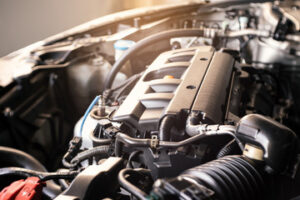An engine is the main part of a machine used to generate power. It converts energy into mechanical energy by using various types of fuel. Heat engines produce force by burning fuel, while electric motors convert electrical energy into mechanical motion. Other types of motors include clockwork motors and pneumatic ones. In addition to fuel, an engine can also use other forms of energy, such as elastic energy and molecular energy. To start an engine, the crankshaft needs to be turned.

The basic principle of an engine is to burn fuel in an enclosed space called the cylinder. When a piston moves up and down in an engine’s cylinder, it performs four important functions: creating a vacuum to draw in air, compressing the air, igniting the fuel, and expelling the byproducts of combustion. To learn more, visit https://www.capistranoauto.com/.
There are several different types of engines, which are divided into different classes according to their fuel sources and modes of energy conversion. The two most common types of engines are diesel and steam engines. They are the main source of power in most mechanical devices. A car’s engine has many parts which perform a variety of functions.
The most basic function of an engine is to convert fuel into mechanical motion. It does this by using a series of components known as combustion cycles. The fuel is introduced through an intake manifold, while the air exits through the exhaust manifold. The intake manifolds are usually made from aluminum or nylon-reinforced plastic, while the exhaust manifolds are made of steel tubing or cast iron.
The combustion chamber must be as gas-tight as possible so that the air and fuel mix can burn quickly. This creates pressure, which in turn moves the piston, which then turns the crankshaft and makes power. It is also important to keep the combustion/expansion stroke as gas-tight as possible.
There are two basic types of engines: two-stroke and four-stroke. Both are used to propel vessels. Two-stroke engines are smaller than four-stroke engines and are used in smaller vessels. These engines are usually found in bulkers. However, four-stroke engines can be found in larger vessels. These types of engines are also found in container ships.
When selecting a gasoline engine, you should consider the fuel. The most commonly used fuel for cars is petrol. This is a clean and environmentally friendly fuel. It is obtained through fractional distillation of crude oil that is found in the sea bed. This fuel is then ignited at very high temperatures. In petrol engines, the fuel is mixed with the air in the carburetor, then released into the cylinder via the intake manifold. More modern automobiles use a fuel injector.
Two-stroke engines are less efficient and polluting than four-stroke engines. Single-stroke engines are usually low-performance and are used in small vehicles. These are also known as “thumper” engines. Multi-cylinder engines have multiple piston-cylinder arrangements and produce more power than single-stroke engines. Most automobiles use multi-cylinder engines. The more cylinders the engine has, the more power it produces, though this also decreases its economy.
The combustion chamber of an engine is the part of an engine that combines the air inlet with the exhaust gas. In this chamber, the air is mixed with fuel and forced to move through a piston, thereby generating power. There are various variables involved in the combustion process which are responsible for the performance of the engine.
The combustion chamber of an engine is defined as the space surrounded by the cylinder and its piston. The combustion chamber has a generally rectangular cross section that extends radially relative to the cylinder bore. It also has an annular lip to separate the piston from the side walls. It can also be divided into two sections, the lower portion, and the upper portion.
The conventional diesel engine has a combustion chamber of a regular re-entrant shape. This type of combustion chamber has a lip zone and is generally referred to as an a, b, or c. However, one of the prior art patent references described a technique for improving the design of this chamber. The process involved making a small cut in the lip zone.
Connecting rods are the most important component of your engine, converting combustion power into engine rotation. As your engine rpm increases, so do the stresses your connecting rods are subjected to. They undergo compression, bending, and tensile stresses and must survive these stresses in order to operate properly.
